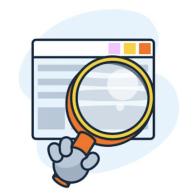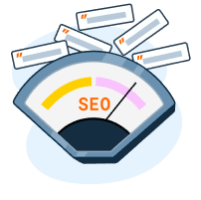
Introduction
As the digital landscape continues to evolve, businesses are searching for ways to enhance their B2B engagement and stay ahead of the competition. One method that has proven to be effective is automated email warm-up. By unlocking the potential of automated email warm-up, businesses can optimize their email deliverability and increase their chances of reaching the inbox of their target audience. In this article, we will explore the concept of automated email warm-up and discuss how it can be leveraged to enhance digital B2B engagement.
Understanding Automated Email Warm-up
Automated email warm-up refers to the process of gradually increasing email sending volume and reputation over time. This practice is necessary because newly created email accounts or domains often lack a reputation with Internet Service Providers (ISPs). Without a positive reputation, there is a high chance that emails from these accounts will be marked as spam and never reach the intended recipients.
The goal of automated email warm-up is to establish a positive sending reputation by gradually sending emails in increasing volumes to engage with recipients. This process allows businesses to build trust with ISPs and improve the chances of their emails being delivered to the inbox rather than the spam folder.
The Benefits of Automated Email Warm-up
Implementing an automated email warm-up strategy offers several benefits for B2B engagement:
1. Improved Email Deliverability
By following a carefully planned warm-up schedule, businesses can avoid triggering spam filters and increase their email deliverability rates. This means that a higher percentage of their emails will reach the intended recipients' inboxes, allowing for better engagement and conversion rates.
2. Increased Sender Reputation
A positive sender reputation is crucial for establishing trust with ISPs. Through automated email warm-up, businesses can gradually build their sender reputation by consistently delivering relevant and valuable content to engaged recipients. This improved sender reputation will ultimately lead to better inbox placement for future email campaigns.
3. Enhanced Audience Engagement
Automated email warm-up provides an opportunity for businesses to engage with their audience in a controlled and strategic manner. By gradually increasing email volume, businesses can gauge the interest and response of their recipients, allowing them to tailor their future email campaigns for maximum engagement and impact.
Implementing an Effective Automated Email Warm-up Strategy
To unlock the potential of automated email warm-up for enhanced B2B engagement, businesses can follow these steps:
1. Start with a Clean and Segmented Email List
Prior to initiating the warm-up process, it is essential to ensure that the email list is clean and properly segmented. Remove any inactive or unengaged subscribers and segment the list based on factors such as demographics, interests, or past purchasing behavior. This will enable businesses to provide more relevant content to their recipients, increasing the chances of engagement.
2. Gradually Increase Sending Volume
Start with a low volume of emails and gradually increase it over time. A typical warm-up schedule may involve sending a few dozen emails on the first day and gradually doubling or tripling the volume each day until reaching the desired sending volume. This gradual increase mimics the behavior of genuine email senders and helps establish a positive reputation with ISPs.
3. Monitor Email Metrics and Adjust Accordingly
Throughout the warm-up process, closely monitor email metrics such as open rates, click-through rates, and spam complaints. Analyze the data to identify patterns and make adjustments to the warm-up schedule if necessary. This iterative approach ensures that businesses are continuously optimizing their email campaigns for better engagement.
4. Provide Valuable and Relevant Content
During the warm-up phase and beyond, it is crucial to consistently deliver valuable and relevant content to recipients. Engage them with compelling subject lines, personalized messages, and informative content that aligns with their interests and needs. By providing value, businesses can establish themselves as trusted senders and foster long-term engagement.
5. Maintain a Consistent Sending Schedule
Once the warm-up phase is completed, it is important to maintain a consistent sending schedule to sustain the established sender reputation. Regularly engage with the audience while adhering to best practices for email marketing. This includes avoiding spam triggers, honoring unsubscribe requests promptly, and continuously fine-tuning content based on recipient feedback.
Conclusion
Automated email warm-up is a powerful tool for enhancing B2B engagement in the digital space. By gradually building sender reputation and following best practices, businesses can effectively optimize their email deliverability, increase audience engagement, and ultimately drive better results from their email marketing campaigns. Unlocking the potential of automated email warm-up unlocks new opportunities for businesses to connect with their target audience and stay ahead in today's competitive marketplace.






























